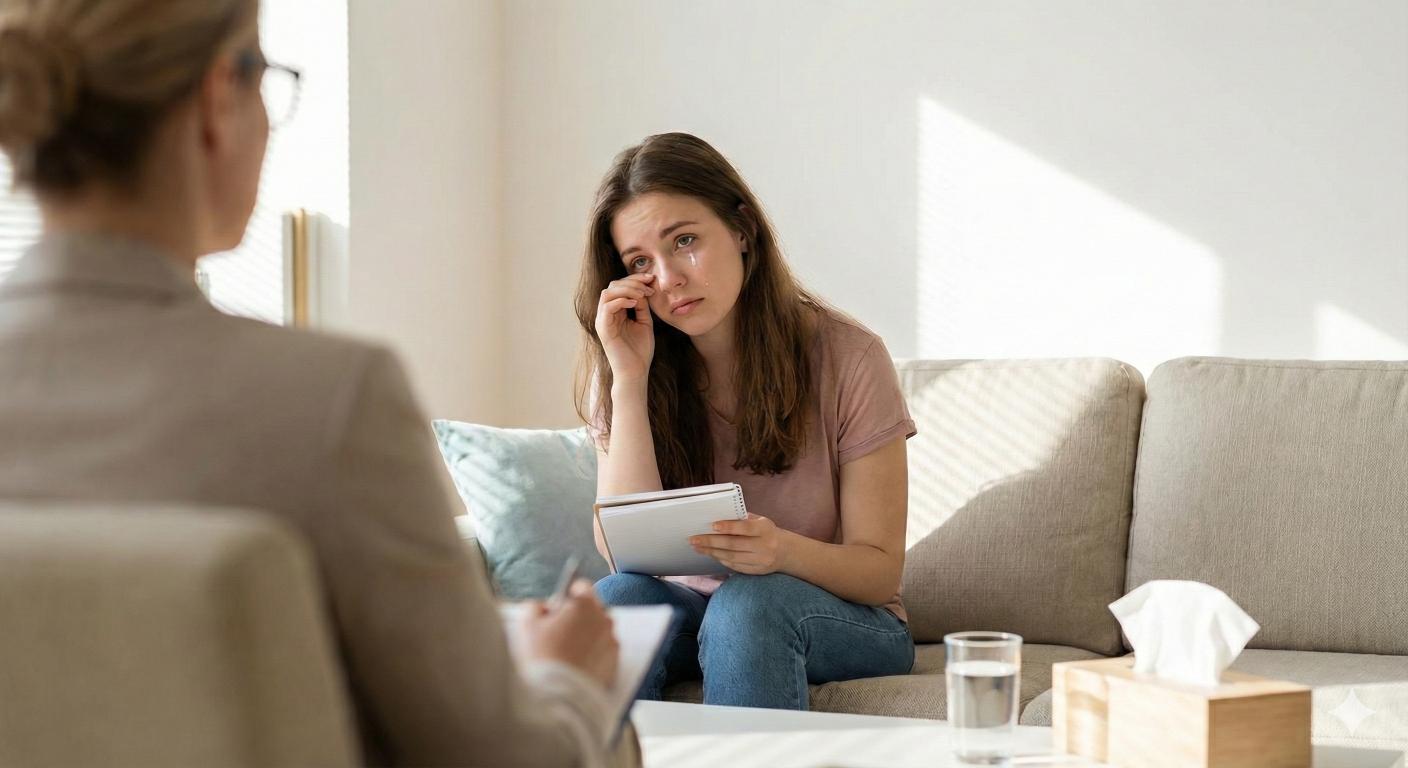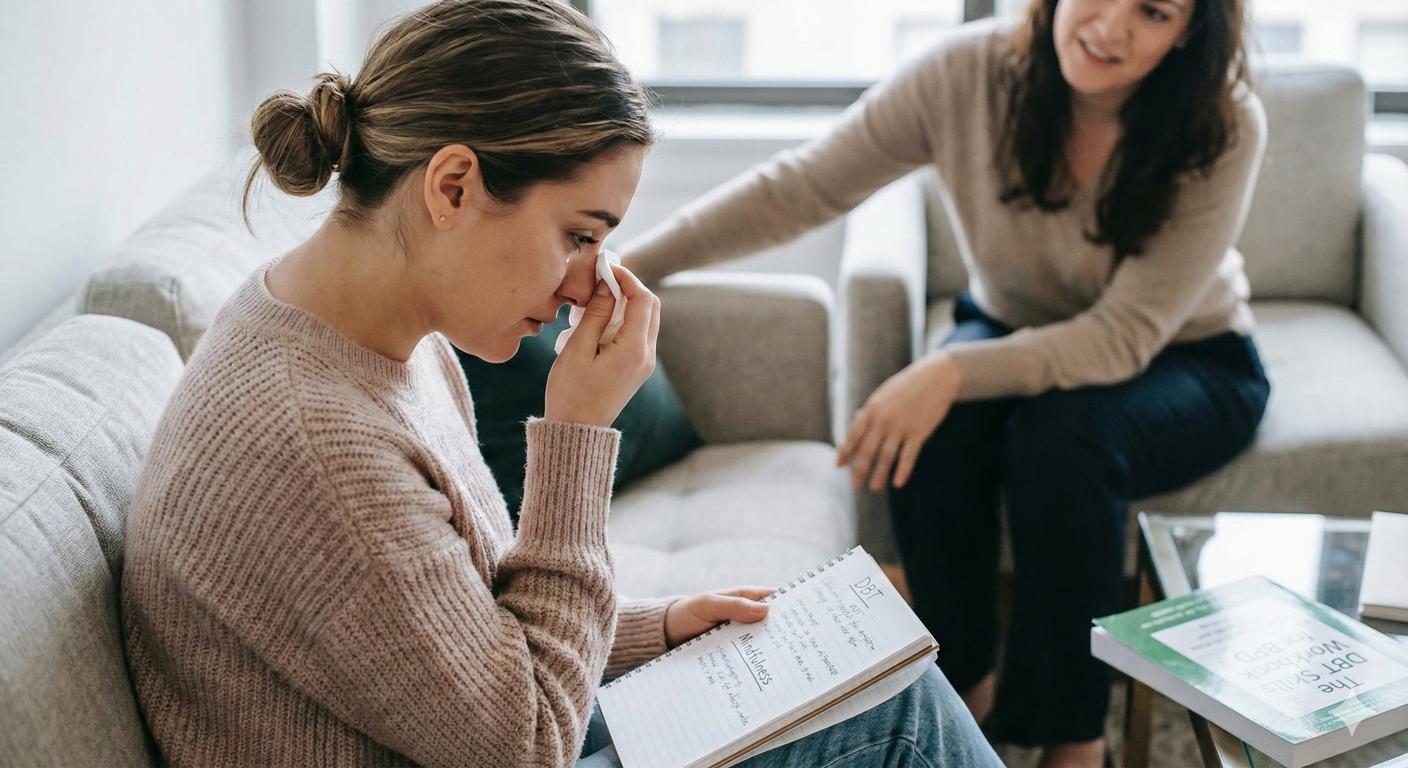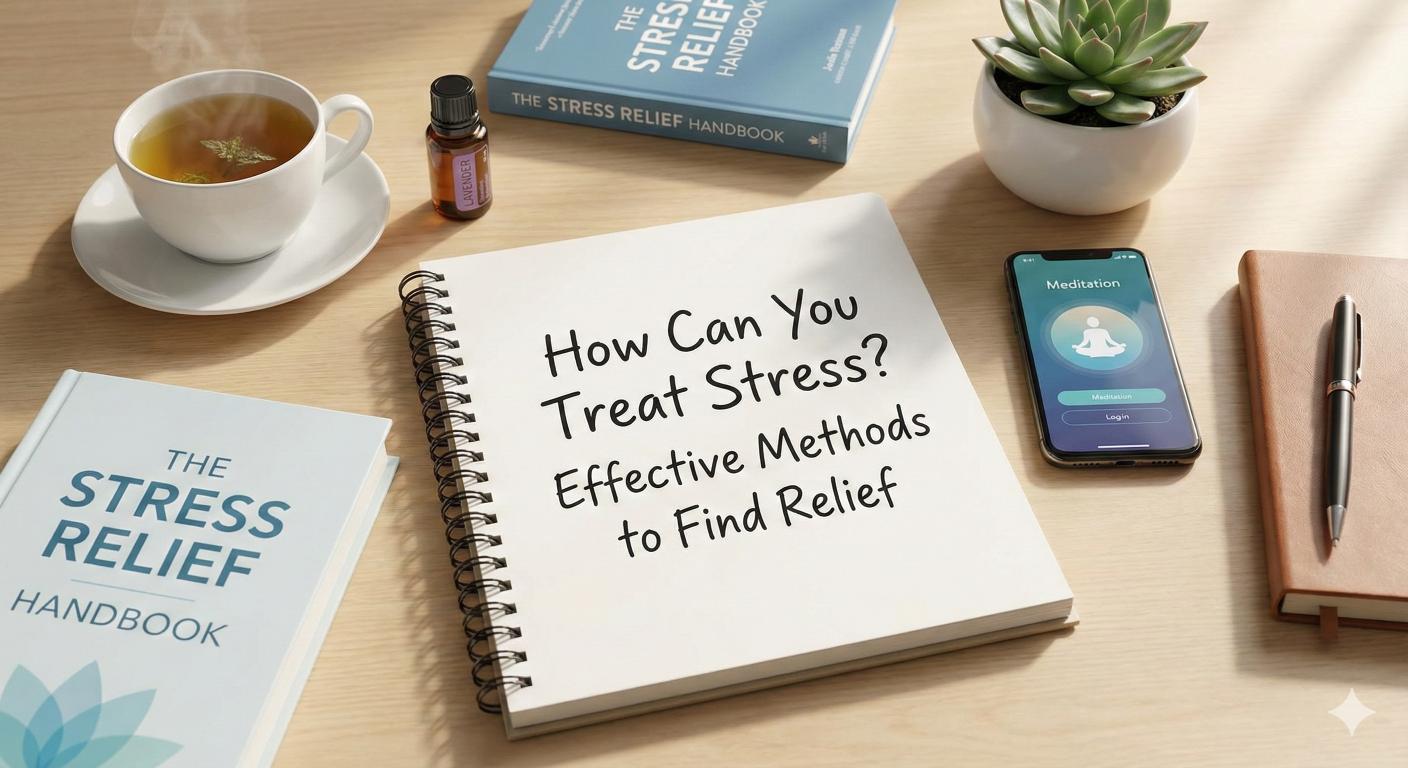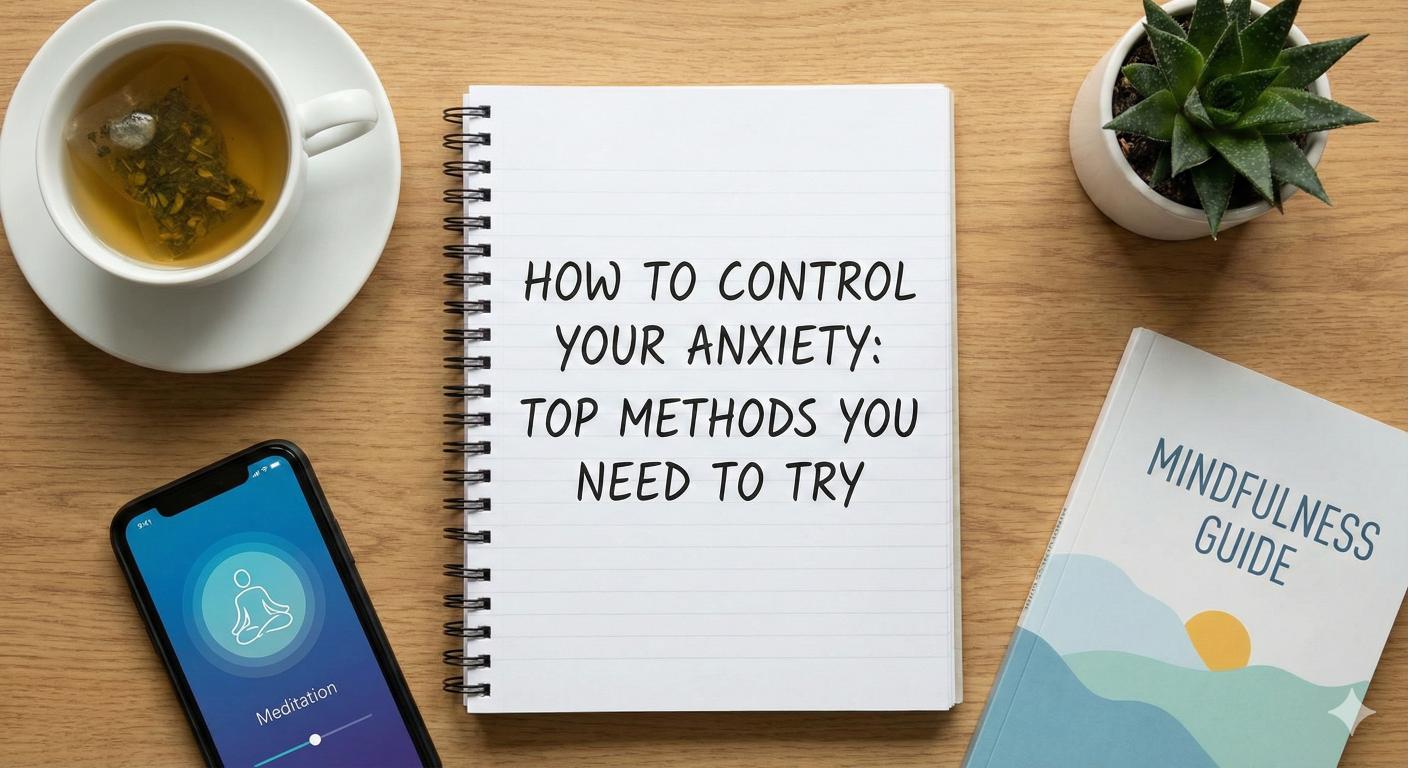Understanding Physical Symptoms of Anxiety
Discover the physical symptoms of anxiety explained, from trembling to muscle tension, and find effective coping strategies.

Understanding Anxiety Symptoms
Anxiety encompasses a range of symptoms that can significantly affect a person's daily life. These symptoms can be categorized into physical manifestations and behavioral changes associated with anxiety.

Physical Manifestations of Anxiety
The physical symptoms of anxiety can vary widely among individuals. Common manifestations include increased heart rate, sweating, trembling, and muscle tension. According to the NHS, those experiencing Generalized Anxiety Disorder (GAD) may also experience dry mouth, rapid breathing (hyperventilation), and feelings of sickness [1].
The table below highlights some common physical symptoms of anxiety:
SymptomDescriptionIncreased Heart RateRapid heartbeat often felt during moments of anxiety.SweatingExcessive perspiration even in non-physical situations.Trembling or ShakingInvoluntary shaking of hands or limbs due to nervousness.Dry MouthLack of saliva resulting in a parched feeling.HyperventilationQuick, shallow breathing often leading to dizziness.Muscle TensionTightness in muscles, leading to discomfort.Difficulty SleepingInsomnia or restless nights are common in anxious states.
Understanding these physical symptoms is crucial for identifying anxiety and seeking appropriate help.
Behavioral Changes Associated with Anxiety
In addition to physical symptoms, anxiety can lead to significant behavioral changes. These changes may include withdrawal from social interactions, avoidance of triggering situations, and difficulties in work or daily activities. Individuals may also take more sick leave due to anxiety-related concerns, which can negatively impact self-esteem [1].
Common behavioral changes associated with anxiety include:
Behavioral ChangeDescriptionSocial WithdrawalReducing social interactions and isolating oneself.Avoidance of TriggersStepping back from situations that induce anxiety.Difficulty with WorkChallenges in completing tasks and meeting deadlines.Increased WorryHeightened worries that may affect mental well-being.
These behavioral changes can have a profound effect on a person's overall quality of life, making it essential to recognize and understand the signs of anxiety.
For further information on anxiety, consider reading about what is anxiety? understanding the basics.

Common Physical Symptoms of Anxiety
Anxiety can lead to various physical symptoms that manifest in individuals. It is essential to recognize these signs as they can significantly affect daily life. Understanding these symptoms can aid in managing anxiety better.
Heart Rate and Sweating
One of the most common physical manifestations of anxiety is an increased heart rate, often accompanied by excessive sweating. This is a result of the body's fight or flight response, which triggers the release of stress hormones. Individuals experiencing generalized anxiety disorder (GAD) may notice their heart racing in seemingly calm situations, leading to additional discomfort.
SymptomDescriptionIncreased Heart RateHeart beats faster than normalSweatingExcessive perspiration under stress
Trembling and Weakness
Trembling or shaking can also be common in those experiencing anxiety. This symptom may occur in various situations, including stressful events or spontaneous anxiety episodes. Alongside trembling, many individuals report feelings of weakness or tiredness. These sensations can heighten the perception of anxiety and make it difficult for individuals to perform everyday tasks.
SymptomDescriptionTremblingInvoluntary shaking of body partsWeaknessReduced strength; feeling fatigued
Breathing and Insomnia
Anxiety can also affect breathing patterns, leading to rapid breathing, known as hyperventilation. This can create a feeling of shortness of breath or suffocation. Additionally, anxiety often leads to sleep difficulties. Individuals may struggle with falling asleep, staying asleep, or experiencing restlessness throughout the night, exacerbating their overall anxiety levels. For more insights on how anxiety impacts sleep, refer to our article on anxiety and sleep: breaking the cycle of sleepless nights.
SymptomDescriptionRapid BreathingQuick and shallow breathsInsomniaDifficulty falling or staying asleep
Recognizing these physical symptoms of anxiety explained can help individuals seek appropriate support and work towards effective management. For more information on effective management techniques, consider exploring our resources on natural remedies for managing anxiety and cognitive-behavioral therapy (CBT) for anxiety disorders.

Impacts of Anxiety on Physical Health
Anxiety can significantly impact physical health, manifesting in various symptoms that can affect daily life. Understanding these physical symptoms of anxiety explained may help individuals recognize their experiences and seek appropriate management strategies.
Muscle Aches and Tension
Muscle aches and tension are common physical manifestations of anxiety. Individuals may experience tightness in their muscles due to chronic stress and the body's constant fight-or-flight response. Chronic anxiety leads to persistent muscle tension, resulting in discomfort and pain over time. This muscle tension can often lead to tension headaches and migraines, making it difficult to focus and engage in daily tasks.
SymptomDescriptionMuscle AchesPain or discomfort in various muscle groups due to tension.Tension HeadachesHeadaches caused by tightened muscles in the neck and scalp.
For more detailed information on cognitive strategies, see our article on cognitive-behavioral therapy (CBT) for anxiety disorders.
Dry Mouth and Headaches
A dry mouth is another physical symptom that individuals with anxiety may experience. This symptom often occurs alongside rapid breathing or hyperventilation, leading to discomfort. Additionally, headaches can frequently occur, exacerbated by muscle tension or dehydration caused by anxiety-induced stress.
SymptomDescriptionDry MouthLack of saliva, leading to difficulty swallowing or speaking.HeadachesPounding or throbbing sensations in the head due to tension.
For more coping methods, consider reading about natural remedies for managing anxiety.
Stomach Issues and Numbness
Anxiety can also trigger stomach issues, such as nausea, stomach cramps, and diarrhea. Additionally, individuals may experience pins and needles or numbness in the hands or feet, which can be alarming. These symptoms arise from the body's physiological response to stress, as anxiety can disrupt normal digestive processes and cause gastrointestinal distress.
SymptomDescriptionStomach IssuesIncludes symptoms like nausea, cramps, and changes in bowel habits.NumbnessTingling sensations in extremities due to hyperventilation or stress-related blood flow changes.
For further insight into how anxiety affects sleep patterns, refer to our article on anxiety and sleep: breaking the cycle of sleepless nights.
Recognizing the impacts of anxiety on overall health is essential for managing symptoms effectively and improving overall well-being.
Seeking Help for Anxiety Symptoms
Addressing the physical symptoms of anxiety is essential for improving overall well-being. Understanding when to seek assistance can make a significant difference in managing anxiety.
Consulting a Healthcare Provider
For individuals experiencing significant distress due to anxiety, consulting a healthcare provider is recommended. Generalized anxiety disorder (GAD) can affect individuals both mentally and physically, with symptoms varying greatly in severity [1]. If anxiety significantly impacts daily life, such as leading to withdrawal from social situations or avoidance of activities due to fear, it’s crucial to seek professional help.
Healthcare providers can assess the severity of symptoms and provide recommendations for treatment options, which may include therapy, medication, or lifestyle changes. Knowing when to reach out for help is vital, as untreated anxiety can evolve into a more serious disorder affecting functionality [2].
Common Reasons to Consult a Healthcare ProviderPersistent feelings of worry or fearPhysical symptoms such as muscle tension or headachesAvoidance of social interactionsImpaired daily functioning
Addressing Behavioral Changes
Anxiety often leads to noticeable behavioral changes. Individuals may find themselves avoiding certain situations, leading to isolation or decreased participation in activities they once enjoyed. Recognizing these changes is key to understanding the impact of anxiety on one’s life [1].
Addressing these behavioral patterns requires awareness and effort. It is beneficial to:
Cognitive Behavioral Therapy (CBT), is one effective approach in addressing not only anxiety symptoms but also the behavioral changes associated with them. By working with a therapist, individuals can learn to identify and modify unhelpful thought patterns and behaviors.
Recognizing the importance of consulting a healthcare provider and addressing behavioral modifications can greatly enhance the management of anxiety symptoms, paving the way for improved mental and physical health.
Managing Physical Symptoms of Anxiety
Managing the physical symptoms of anxiety can significantly improve an individual's quality of life. Various strategies can be employed to alleviate these symptoms, including relaxation techniques, physical activities, and cognitive behavioral therapy.
Relaxation Techniques
Relaxation methods play a vital role in easing the physical symptoms of anxiety. Techniques such as deep breathing, mindfulness meditation, and progressive muscle relaxation can help calm the body’s response to anxiety. According to Harvard Health Publishing, these methods are effective for managing symptoms. Here are some common relaxation techniques:
TechniqueDescriptionDeep BreathingBreathing deeply and slowly to reduce tension.Mindfulness MeditationFocusing on the present moment to alleviate anxiety.Progressive Muscle RelaxationTensing and relaxing different muscle groups to release stress.
Reassuring oneself that symptoms are not harmful can also provide comfort. If physical issues persist, seeking help is advisable.
Physical Activities
Incorporating physical activities such as walking, running, or yoga can also help manage anxiety symptoms. Exercise releases endorphins, which can enhance mood and promote a sense of well-being. Regular physical activity can effectively reduce feelings of anxiety and stress while improving overall health and resilience.
ActivityBenefitsWalkingLow-impact exercise that reduces stress.RunningBoosts endorphins and improves mood.YogaCombines stretching with relaxation techniques.
Even short bouts of activity can be helpful. Engaging in physical activity regularly can make a significant difference in managing the physical symptoms of anxiety.
Cognitive Behavioral Therapy
Cognitive Behavioral Therapy (CBT) is a widely recognized and effective treatment for anxiety. CBT focuses on changing negative thought patterns that contribute to anxiety, and it has shown to lead to improved physical symptoms associated with anxiety [3]. It is essential to discuss this option with a healthcare provider, especially if anxiety symptoms do not improve with relaxation techniques or physical activity alone.
For those who continue experiencing anxiety despite therapy, medication may be discussed as a supplementary option. CBT may involve strategies that allow individuals to reassess their fears and manage their responses to anxiety-provoking situations.
By utilizing relaxation techniques, engaging in physical activities, and considering cognitive behavioral therapy, individuals can effectively manage the physical symptoms of anxiety. Understanding these options can empower them to take practical steps towards relief while improving their overall well-being. For more information on managing anxiety, consider exploring natural remedies for managing anxiety or cognitive-behavioral therapy (CBT) for anxiety disorders.
Risks and Prevalence of Anxiety Disorders
Understanding the prevalence and risks associated with anxiety disorders is essential for recognizing the scope of the impact they have on both individual health and society.
Worldwide Prevalence of Anxiety
Anxiety disorders represent a significant global health concern. A systematic review conducted in 2014 indicated that the worldwide prevalence of anxiety disorders ranges from 3.8% to 25%. In the United States, the lifetime prevalence of anxiety disorders is estimated to be around 16% [4]. This data highlights the widespread nature of anxiety and indicates a need for awareness and effective management strategies.
LocationPrevalence Rate (%)Worldwide3.8 - 25United States (Lifetime)16
Co-occurrence with Medical Conditions
Anxiety often coexists with various medical conditions, complicating treatment and affecting overall health. Among U.S. adults aged 22-64 who experience anxiety without concurrent depression, research shows notable rates of co-occurrence with conditions such as:
Medical ConditionCo-occurrence Rate (%)Arthritis27.2Chronic Obstructive Pulmonary Disease (COPD)13.7Diabetes8.2Heart Disease10.5Hypertension25.5
Individuals with anxiety show statistically higher rates of these general medical conditions compared to those without anxiety [4]. This interplay suggests that managing anxiety effectively may also benefit physical health.
Allostatic Load and Physical Changes
Chronic anxiety can lead to significant physiological changes that result in what is known as allostatic load. This term refers to the cumulative wear and tear on the body due to prolonged stress response, mediated by fluctuations in hormone levels. Over time, these stress responses can increase the risk for various general medical conditions [4]. Awareness of how chronic anxiety can affect physical health underscores the importance of early intervention and tailored treatment approaches.
For those looking to understand more about managing the physical symptoms associated with anxiety, exploring options such as natural remedies for managing anxiety or cognitive-behavioral therapy can be beneficial. This knowledge helps paint a clearer picture of the many facets of anxiety disorders and their implications for both mental and physical health.
References
[2]:
[3]:
[4]:
More Resources
A team ready to start your journey.
Get in touch — today.
We are a safe space – a haven for exceptional individuals to receive discreet, personalized, in-person treatment and care.
.avif)










